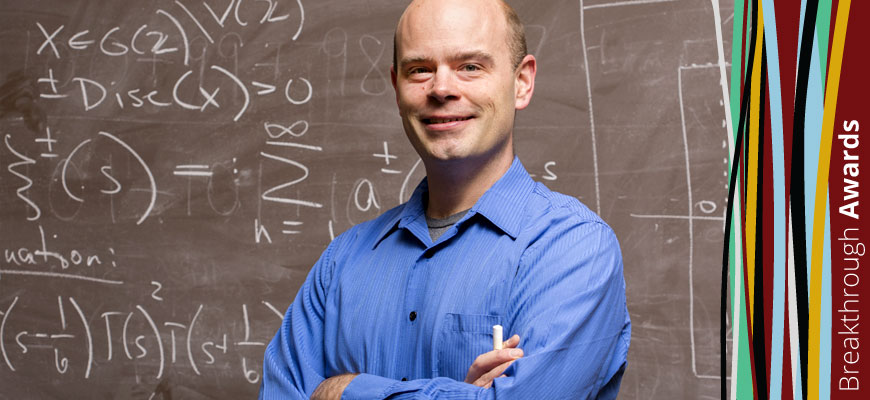
Tackling the messes
Mathematics professor Frank Thorne looks for answers to messy problems
Posted on: July 14, 2017; Updated on: July 14, 2017
By Melinda Waldrop, melwal@mailbox.sc.edu, 803-777-3685
Frank Thorne doesn’t mind messes.
An assistant mathematics professor in the College of Arts and Sciences whose career includes a prolific publication record and collaborations with formidable math minds, Thorne isn’t interested in neat answers. His work in analytic number theory and arithmetic statistics — complicated concepts that having their origins in counting things like prime numbers — bears out his belief that the process is just as fulfilling as the result.
“As I read once, if you see some horrible mess, as a young scientist, it’s often a good idea to tackle it,” Thorne says. “Any time you see a theory that’s beautiful, where everything’s been worked out and it’s just perfect — there’s no work left to do. Go approach the messes.”
Thorne found himself drawn to a specific mess after getting his Ph.D. at the University of Wisconsin in 2008. During postdoctoral work, he stumbled upon the 40-year-old theory of Shintani zeta functions. Working with Japanese mathematician Takashi Taniguchi, Thorne used that theory to help prove a 10-year-old conjecture on cubic number fields.
“I was very brash and confident, which was a good thing, because if I’d known how many obstacles we would have faced, I don’t think I would have dared to try,” Thorne says.
The resulting paper, published in the Duke Mathematical Journal, earned Thorne acclaim and dovetailed with work being done by Manjul Bhargava, who won a Fields Medal for his advances in the subject.
Thorne and Bhargava became friends and collaborators. Thorne has also written four papers with Henri Cohen, author of four graduate-level textbooks on number theory.
Any time you see a theory that’s beautiful, where everything’s been worked out and it’s just perfect — there’s no work left to do. Go approach the messes.
Frank Thorne
Conversant in Japanese, Thorne travels often as part of an impressive international dossier. He’s given 32 talks at conferences and workshops and has been invited to speak in Japan, France, Korea and Canada. He helps organize biannual Palmetto Number Theory conferences, which bring international experts to speak at universities across the Southeast. And he’s passionate about his work with the Math Circle, a program for local middle and high school students with a voracious appetite for the subject.
“The Math Circle is not about competition. Competitions are often about some clever trick,” he says. “Real math is a little more ambiguous. Usually the problems are a complete mess to solve completely. You have to come up with your own questions which you think are worth answering.
“Imagine just tossing raw meat into a tank full of sharks. You give these kids math problems and they go after them in the same way.”
Perhaps Thorne, who talks excitedly of prodigy Carl Friedrich Gauss’ solving of a complicated math problem at age 6, recognizes a bit of himself in the ability to get so lost in the subject.
“Whenever I’m really doing math, my self-awareness disappears completely, so I have pretty much no memory of learning math or doing math,” he says. “I just remember the math itself.”